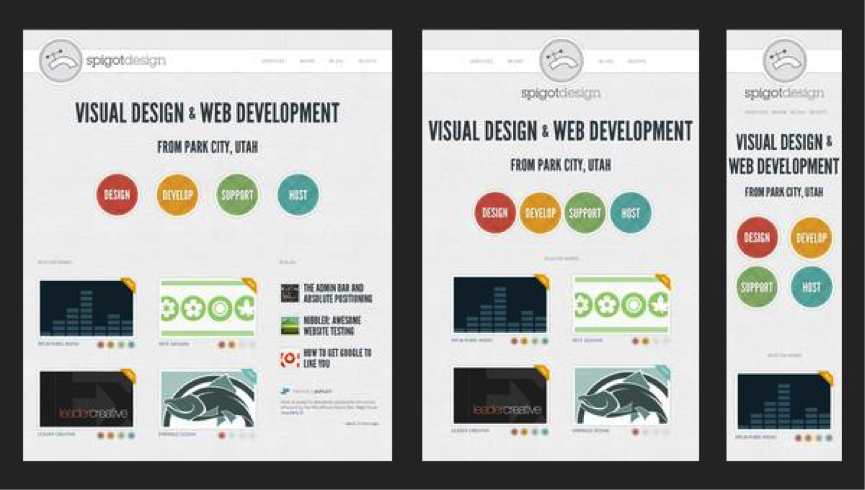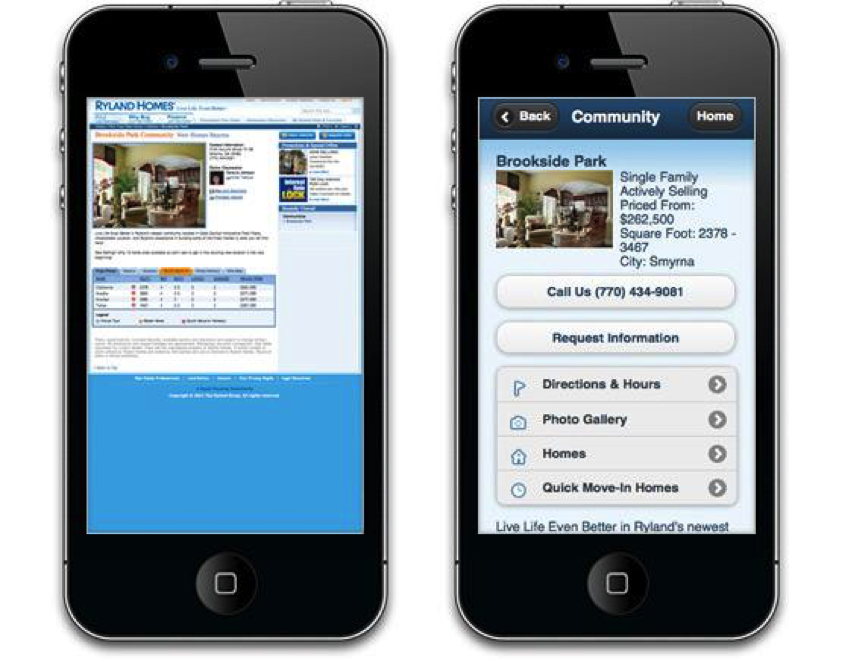The following is a guest post by Faye Holder. Faye Holder is a Content Marketer at Attract and Convert, who loves nothing more than creating content and writing about herself in the third-person. Faye loves that.
Why mobile design should come before desktop design
Is your website failing to convert enough customers? Perhaps you’ve diligently followed every new trend in the business, but frustratingly you’re still not seeing any real difference. It may feel like you’re struggling to keep up with ever-widening goal posts, but these shifts, especially those in the last few years, are significant ones. Two years ago a tipping point was reached in the world of Internet searching – for the first time, mobile Internet searches overtook those conducted on desktop computers, and that fact has changed the game when it comes to website design. This is why it’s time to put mobile design first rather than having it be an afterthought. A website that makes mobile users’ experiences quick and easy is absolutely key to increasing your company’s sales.
Simply having a website that acknowledges the presence of mobile phones isn’t enough. You might be used to hearing your web developer harp on about how you need to incorporate mobiles into your design strategy, but mostly all you heard was, ‘I’m going to need more money.’ So you threw the little money you could spare at it and wound up with a compromise like many companies did. You tagged on a mobile site to try and scoop up that tiny new mobile business everyone kept going on about, and then you forgot about it. As a result of this attitude, navigating first-generation mobile sites was a frustrating experience. The user was often met with slow load times and pages that looked awful. Users were faced with only seeing half the page or a page that was tiny, with links and buttons so small they were almost impossible to click on.
Before you read on - we have various resources that show you exactly how to use social networks to gain massive traffic and leads. For instance, check out the following:
FREE Step-by-Step Twitter Marketing GuideFREE Pinterest Marketing Ebook
The sites looked obviously shoehorned into their mobile format, but this didn’t really matter up until a few years ago, as not many people were regularly using mobile sites. As mentioned earlier, this has changed. In 2015, Google reported that more Internet searches now take place on mobiles than on desktops. More and newer numbers on mobile Internet usage can be found here.
This dramatic reversal means that your mobile site can no longer be a bolt on to your desktop site. Mobile web design needs to take the lead and desktop needs to follow, because people are now more likely to encounter your website while using their phones. You need to prioritise the experience of mobile users, as not doing so is undoubtedly costing you business. According to a survey on Kissmetrics, 79% of shoppers who experience problems with a website’s performance won’t return to the site to buy again.
However, although many more people are now using their phones to search, conversion rates on mobiles are still lagging behind desktops. The reason for this was thought to be because people were worried about security, but the cause is actually simpler and more straightforward to fix. The key to mobile conversions is user experience. A survey carried out by Mobile Marketer found that people were more likely to buy when using a device with a larger screen because the process was quicker and easier. This data clearly shows that a better user experience leads to increased conversions. If people can find what they want without having to expend too much energy, they’ll often make a purchase. The data also shows why it’s crucial to create a website that is optimised to work on a mobile. Bigger screens are easier to navigate, so users get to what they want more easily, so this is the experience you have to replicate on mobile sites in order to make more conversions. You don’t need a bigger screen; you just need a website that works as if it’s on a bigger screen. You need to get your customers to the information they want without them having to work too hard for it. Your customers will not tolerate a slow and clunky user experience, because, as we’ve seen, they’re unlikely to visit you again if they do encounter this.
Is your website all form and no function?
Who doesn’t want to have a good looking website? But form should never be at the expense of functionality. Flashy images and jazzy logos are nice to look at, and if Google ranked websites by effort alone, those sites would be way up there. Unfortunately, Google ranks sites by content, and so no amount of nicely photographed images is going to result in more conversions. What counts is relevant content. Your website needs to tell Google what it’s about. The more relevant information you have on your site, such as blogs and accurate product descriptions, the more trusted you’ll be by Google, this, in turn, will help you to rank higher in organic searches. The higher your ranking means more traffic to your site, and if it’s well-optimised, then you’ll be making more conversions.
User experience is key to converting more customers
As touched upon earlier, user experiences are what really count when it comes to converting visitors into customers. The more you know about visitors to your site the better. What are they looking for? Is it easy to find? Are there any unnecessary steps that are getting in their way? You need to put yourself in your customers’ shoes and give them the information they need. Don’t make them trudge across your whole site just to find answers to common questions, such as opening hours or customer service phone numbers; this will only annoy them. Make their user experience easy – remember this will lead to more conversions. If you have trouble seeing your site from your customers’ point of view, then you can always use online services like What Users Do or User Testing. These will point out what’s getting in the way of purchase.
If you’re really serious about improving user experiences and increasing conversions, then you’ll also want to embrace Growth Driven Design (GDD). In a nutshell, GDD turns the ‘build it and leave it’ approach of traditional website design on its head by using data generated by user interactions on your site. Rather than having one huge redesign that will cost thousands of pounds and take months, GDD can be up and running within weeks. Your site is then continuously monitored and improvements made, while your marketing and sales goals can be informed by actual data rather than guesswork.
Converting readers into customers
Once a user is reading your blog, how do you then convert them into a customer? To do this, it’s vital that you include a call-to-action. This will prompt the user to call the business there and then or to sign up for a newsletter. The call-to-action will provide you with more information about a prospect, such as a name, email address, phone number, or the company they work for, and enable you to target them appropriately. If you send them interesting and informative emails every once and while, they’ll not only learn more about your expertise and knowledge, but they’ll come to trust you and convert into customers when they’re ready. If you’ve spent time nurturing a relationship, then your prospects are more likely to pick your company over your competitors.
To do this, it’s vital that you include a call-to-action. This will prompt the user to call the business there and then or to sign up for a newsletter. The call-to-action will provide you with more information about a prospect, such as a name, email address, phone number, or the company they work for, and enable you to target them appropriately. If you send them interesting and informative emails every once and while, they’ll not only learn more about your expertise and knowledge, but they’ll come to trust you and convert into customers when they’re ready. If you’ve spent time nurturing a relationship, then your prospects are more likely to pick your company over your competitors.
As we’ve seen, a website that has not been designed with mobiles specifically in mind is likely to be offering your customers a dim view of your company, when it should be acting as a 24/7 salesperson. Worst still, a badly designed mobile site could actively be driving customers away from your company, as they become frustrated with not being able to easily find what they want and so abandon their searches, costing you vital business. Remember, happier user experiences lead to more conversions.
Hey, before you read on - we have in various FREE in-depth guides on similar topics that you can download. For this post, check out:
FREE workbook: CREATE AWESOME BLOG POSTSFREE Beginner's Guide: START A BLOG




